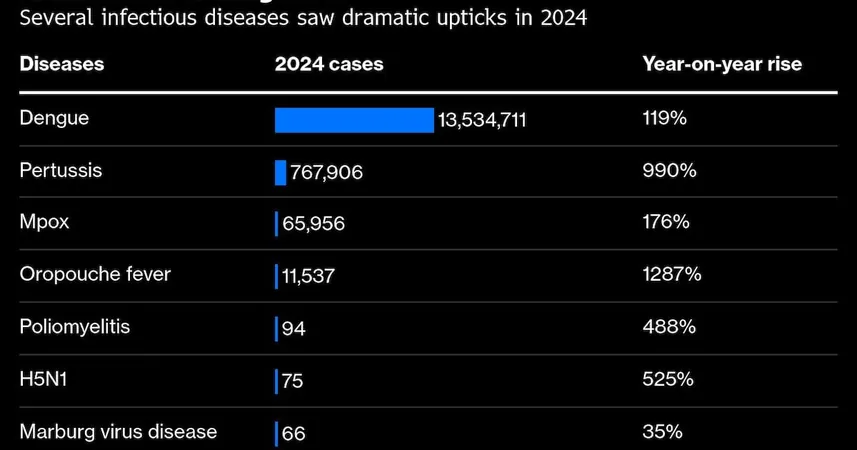
Uncover the Hidden Glow: Biofluorescent Plants and Animals More Prevalent Than You Think!
2024-12-23
Author: Olivia
Did you know that the natural world is home to a plethora of glowing creatures? Most people are familiar with bioluminescence, where organisms produce their own light, primarily found in the dark depths of the ocean or in secluded caves. This mesmerizing display is a result of biochemical reactions facilitated by specialized enzymes, creating stunning light effects.
However, there is another captivating phenomenon at play: biofluorescence. This occurs when organisms absorb light from their environment and re-emit it at a longer wavelength. This process can be attributed to unique molecules called fluorophores. You may wonder what these fascinating molecules do. They serve multiple functions, such as luring mates, attracting prey, and assisting in pollination!
Recent studies suggest biofluorescence is far more widespread than previously thought. According to a preprint paper by researcher Hannah Burke, many organisms can engage in biofluorescence in wavelengths beyond human perception. This is astonishing, as it opens a whole new world of color and light we have yet to explore.
Burke explains, “Humans perceive light within a narrow range of the electromagnetic spectrum (approximately 380 nm to 700 nm), while various organisms can detect different wavelengths. For instance, bees, among other pollinators, can see into the ultraviolet spectrum, detecting floral patterns that remain hidden to the human eye.”
So how can curious minds like yours catch a glimpse of this hidden glowing magic? Burke suggests using a blacklight, a tool that reveals fluorescence in substances that would otherwise remain invisible. “Blacklights emit shorter wavelengths than visible light, enabling the fluorescence to reappear as longer wavelengths visible to humans. This means we sometimes need a little technological assistance to unveil the fantastic glow of nature around us!
Excitingly, a new initiative called Finding Fluorescence encourages both amateur and experienced scientists to get involved in this discovery adventure. With the right tools like a blacklight, anyone can contribute to finding and documenting biofluorescent species that could provide valuable insights for ecological research.
So, why not grab a blacklight and step into the night? This thrilling endeavor awaits you! Not only will you engage with nature in a fun and unique way, but you might also help unveil the next biofluorescent organism, transform our understanding of the natural world, and even contribute to scientific progress. Don’t miss out on the chance to be part of this glowing miracle!









 Brasil (PT)
Brasil (PT)
 Canada (EN)
Canada (EN)
 Chile (ES)
Chile (ES)
 España (ES)
España (ES)
 France (FR)
France (FR)
 Hong Kong (EN)
Hong Kong (EN)
 Italia (IT)
Italia (IT)
 日本 (JA)
日本 (JA)
 Magyarország (HU)
Magyarország (HU)
 Norge (NO)
Norge (NO)
 Polska (PL)
Polska (PL)
 Schweiz (DE)
Schweiz (DE)
 Singapore (EN)
Singapore (EN)
 Sverige (SV)
Sverige (SV)
 Suomi (FI)
Suomi (FI)
 Türkiye (TR)
Türkiye (TR)